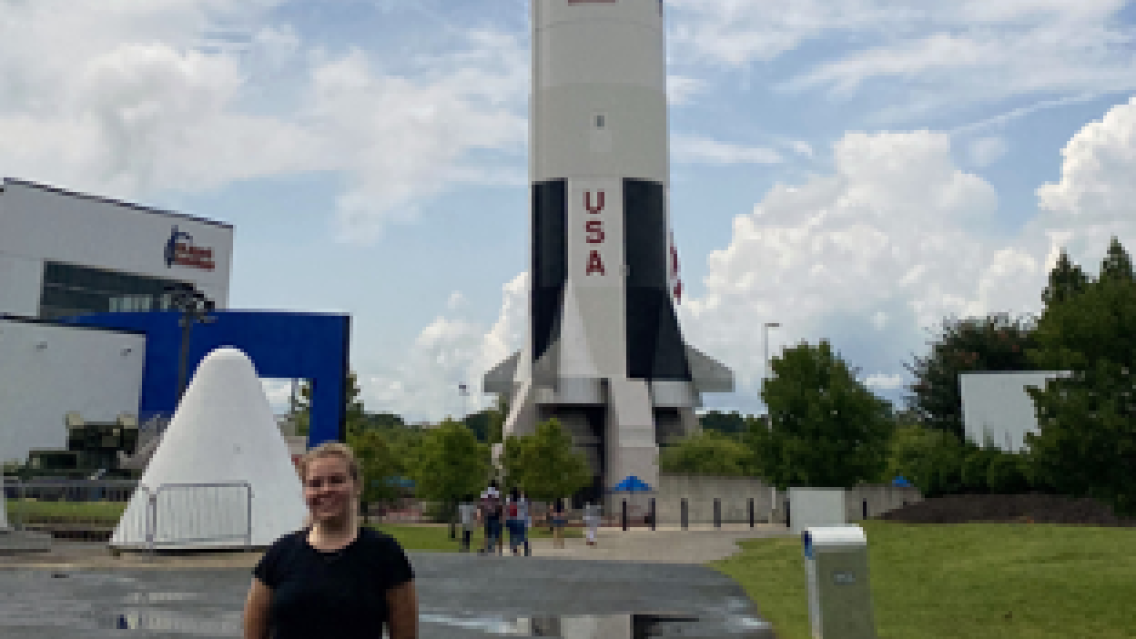Local Mentorship, Global Impact

UAH and SERVIR Lifting Up the Next Generation of Women in Geoscience
When she met a SERVIR Earth scientist at a women’s STEM program in Europe, Allison Levin was on her way to becoming a physicist. But when she began researching the effects of particulate air pollution a year later, Levin realized she needed a hand jumping from particles to planet-sized problems.
 |
Levin met Emily Adams, UAH researcher and regional lead for SERVIR’s Eastern & Southern Africa hub, during a WiSci (Women in Science) Camp in Kosovo in 2019. WiSci Camps are a partnership of Girl Up and the U.S. Department of State providing intensive STEAM (science, technology, engineering, art and design, and mathematics) training and leadership summits for girls around the world. Adams was a featured speaker at the Kosovo event, introducing a NASA Earth Science-based curriculum that touched on using remote sensing to study atmospheric patterns. When Levin started at New York University the next year, she joined a physics lab studying particulate matter in air pollution.
“Most of the research and information I received in school was about ideas on a small or microscopic level,” Levin says of her physics-based approach to studying air pollution. “When I did more research on the air quality issue in Louisiana, I learned that it was something that had to be looked at from a much larger scale and I remembered Emily’s description of her work.” Levin reached out to Adams with an idea for a potential research collaboration.
Now a rising sophomore at NYU, Levin is in regular contact with Adams to get professional guidance studying air pollution from a new perspective. On July 16, NASA SERVIR’s Science Coordination Office (SCO) welcomed Levin, who received a grant to travel to Huntsville and meet Adams in person again. During her visit, Levin had the opportunity to share her preliminary research and network with the SERVIR team.
Together, Levin and Adams are using remote sensing and geospatial technology to assess the adverse public health impacts of petrochemical manufacturing in Louisiana. Known as “Cancer Alley”, this 100 mile section of the Mississippi River contains many oil refineries and chemical plants, stretching from Baton Rouge to New Orleans. Many communities in the immediate vicinities of these industrial sites are predominantly citizens of color, and the region has been the center of public health and environmental justice debates for decades. Above average concentrations of cancer diagnoses have been measured in the area, leading to widespread concern about the public health hazards posed by these facilities. In May 2021, the UN Human Rights Committee issued a statement condemning continued industrial development in the region as a form of environmental racism.
Levin’s research will seek to better understand the relationship between petrochemical refineries in the region and air pollution. As part of her visit to Huntsville, Levin spent time learning geospatial resource methods to support the project and networking with experts in the SERVIR community. Levin has been the driving force behind the development of their project, with Adams providing scientific and professional guidance.
“Allison is an inspiration to work with, she has taught me so much during this short time and I can’t wait to see where this project takes us” says Adams. “Her initiative and curiosity remind me a lot of myself when I was her age, and I know she will leave a profound impact on the world.”

